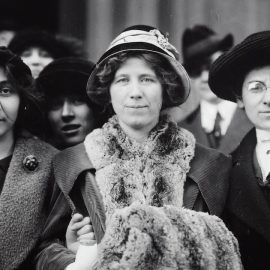
Tired of feeling like your career doesn’t matter? You’re not alone. In Moral Ambition, Rutger Bregman explains that 25% of workers in wealthy countries believe their jobs are socially meaningless. At the same time, the world’s biggest problems, from climate change to global poverty, need talented people working on solutions. His answer is to restructure your career around creating a measurable impact on humanity’s greatest challenges.
To understand Bregman’s critique of current approaches and his proposed alternative, we’ll examine his argument through four questions: What is moral ambition? Why does it matter? Why do both traditional activism and effective altruism fall short of creating lasting change? And how can individuals cultivate and apply moral ambition in practice? Read more in our overview of Moral Ambition.
Overview of Moral Ambition
In Moral Ambition, Rutger Bregman argues that despite living in an era of unprecedented resources and opportunities, most of us are wasting our time and talent. He contends that making a meaningful impact on the world requires “moral ambition”—the drive to use your skills, resources, and career not just to pursue your own success, but to take on humanity’s most pressing challenges. Bregman argues that rather than simply following your passion or assuming that good intentions will lead to good outcomes, you can create real change by thinking strategically about where your efforts can do the most good.
Bregman says this addresses a critical problem: the gap between good intentions and effective action. He points to research showing that 25% of workers in wealthy countries consider their jobs meaningless, while many Harvard graduates end up in consulting and finance rather than working to address global challenges like poverty, disease, or climate change. At the same time, he argues that well-intentioned activists often fall into the trap of being “noble losers,” people who care deeply about important causes but fail to achieve meaningful results because they prioritize moral purity over strategic effectiveness.
What Is Moral Ambition?
Moral ambition is the drive to dedicate your working life to tackling major global challenges, from climate change and poverty to disease and inequality. According to Bregman, this means structuring your career around making the world better, using your time and talents to create a positive impact. Most people plan their careers by asking, “What’s my passion?” or “How can I be successful?” But Bregman argues these questions ignore a moral dimension of career choices: He contends that if you have the education, skills, and economic security to choose how you spend your working life, you have a moral obligation to use those advantages for more than personal gain.
For most people, practicing moral ambition would mean leaving careers in consulting, finance, or other fields that don’t directly tackle major problems and instead finding work that contributes to solutions. Bregman contends that we have to do more than just care about these issues, raise awareness about them, or donate money to address them. Morally ambitious people treat career success as inseparable from moral purpose, actively selecting work that directly addresses humanity’s most serious problems.
What Are the Core Principles of Moral Ambition?
Bregman’s framework for moral ambition rests on four principles that distinguish it from both conventional career advice and traditional approaches to activism.
Expanding Your Moral Circle
First, Bregman explains that practicing moral ambition requires you to widen your scope of moral concern beyond the people and causes you naturally care about. He argues that moral progress throughout history has involved gradually including more beings within our circle of ethical consideration—from family and tribe to nation to all humanity, and potentially to animals and future generations. Morally ambitious people actively work to overcome the psychological biases that make us care more about familiar people and problems than distant ones. The goal isn’t to care equally about everyone, but to make deliberate choices about moral priorities rather than defaulting to whatever feels emotionally compelling.
Prioritizing Based on Impact
Second, Bregman explains that moral ambition requires strategic thinking about where your efforts can accomplish the most good. Rather than following your personal passion or emotional attraction to particular causes, moral ambition requires rigorous evaluation of which problems offer the greatest opportunities for meaningful progress. This involves asking hard questions about how big and manageable problems are and whether they’ve been neglected, rather than simply choosing causes that feel meaningful. Moral ambition might require you to work on problems that aren’t emotionally satisfying if they represent better opportunities to help large numbers of people or prevent serious harm.
Strategic Flexibility
Third, Bregman notes that moral ambition combines strong moral commitments with flexible thinking about methods and tactics. Morally ambitious people hold firm to their ultimate goals while remaining open to evidence about which approaches work. This means being willing to compromise on tactics, build coalitions with unlikely allies, and change strategies when evidence shows they’re ineffective. Bregman also explains that it’s important to recognize that perfect solutions may not exist and that incremental progress toward important goals is often better than holding out for ideal outcomes. The focus remains on achieving real-world results rather than maintaining moral purity.
Perseverance and Accountability
Fourth, a mindset of moral ambition acknowledges that meaningful change typically requires sustained effort over years or decades. Bregman explains that morally ambitious people build systems for maintaining their commitment through setbacks and for evaluating whether their efforts are producing the intended results. This includes surrounding yourself with others who share similar commitments, regularly reassessing your approach based on evidence and feedback, and being willing to admit mistakes or change direction when necessary.
Why Do We Need Moral Ambition?
Bregman argues that moral ambition responds to two interconnected problems that prevent society from making adequate progress on major global challenges.
Many of Us Waste Our Time and Talent
The first problem Bregman identifies is that many people are wasting their time and talent on jobs that don’t make a difference. Twenty-five percent of workers believe their jobs are meaningless. These are what anthropologist David Graeber calls “bullshit jobs”—roles that even the people doing them recognize as contributing little to society. Many of these workers are highly educated people with the skills to tackle major global challenges, as illustrated by university statistics: Nearly half of Harvard graduates enter consulting or finance, rather than working on the world’s biggest problems. In Bregman’s view, the opportunity cost of this misallocation of talent is enormous.
We Depend on Awareness, Not Action, for Change
The second problem Bregman identifies is that we erroneously believe awareness of problems leads to solutions. He explains that this misconception is easily disproven by what psychologists call the belief-behavior gap: the disconnect between what people say they believe and how they behave. Most people are aware of problems like climate change and global poverty, but don’t act to address them. Activists treat consciousness-raising as an end in itself, rather than a first step toward motivating people to act. They spend their energy making sure people recognize and have the “right” opinions about problems. Yet awareness alone doesn’t feed hungry people, slow climate change, or alleviate suffering.
Why Both Traditional Activism and Effective Altruism Fall Short
Bregman presents moral ambition as a necessary alternative to the two dominant approaches people currently take to trying to make the world better: traditional activism and effective altruism. While traditional activists and effective altruists share the goal of creating positive change, he contends that both movements have flaws that prevent them from achieving the impact that moral ambition can have.
Traditional Activism Prioritizes Moral Purity Over Results
Bregman defines traditional activism as the approach taken by people who care deeply about issues and work to raise awareness, protest injustices, and advocate for systemic change. These activists are motivated by strong moral convictions about problems like inequality, climate change, and oppression, and they often focus on consciousness-raising and political organizing to address these issues. However, Bregman argues that traditional activism has become more concerned with maintaining ideological consistency than with achieving concrete outcomes.
He applies the term “noble loser” to activists who genuinely care about important causes but fail to create meaningful change because they make decisions based on what feels morally pure rather than what actually works. This manifests in specific ways: Noble losers reject potentially effective strategies if they originate from sources they consider morally compromised—like refusing to work with business leaders on environmental issues because those leaders aren’t committed to anti-capitalist goals. Noble losers also refuse to collaborate with people who support some of their policy goals but don’t share their whole worldview.
The result, in Bregman’s view, is that traditional activists confuse having the right beliefs with taking effective action and prioritize preserving moral consistency over winning the political victories necessary for change. Bregman sees this pattern extending to how the political left approaches systemic change. He argues that while there’s value in analyzing how the structures of our society create or perpetuate problems like inequality, many progressives use these discussions as an excuse to avoid taking action. When confronted with suggestions for taking individual responsibility to make things better—like donating to effective charities—they deflect by insisting that systemic change must come first.
Effective Altruism’s Approach Makes It Unappealing—and Potentially Harmful
Bregman describes effective altruism (EA) as a movement that uses evidence and rational analysis to determine how people can do the most good with their time and money. EA often focuses on areas like poverty, animal welfare, and existential risks, emphasizing quantitative measures of impact and cost-effectiveness. The movement encourages people to either donate large portions of their income to highly effective charities or pursue careers that directly tackle the world’s most pressing problems. While Bregman sees EA as superior to traditional activism in its moral seriousness and commitment to measuring results, he argues that its core philosophy creates problems that limit its potential as a movement for change.
Bregman’s primary objection is to EA’s guilt-based approach to motivation, which comes from a thought experiment by philosopher Peter Singer. Singer asks: If you saw a child drowning in a pond, would you wade in to save them even if it meant ruining your shoes? Most people say yes. Singer suggests that consistency requires the same response to children dying from preventable diseases in poor countries: We should donate the money we’d spend on luxuries to save those lives instead. Bregman says this turns every decision into a moral test—buying coffee instead of donating that money becomes a choice to let a child die—which makes moral action feel like a constant burden and leads people to burn out or abandon their goals.
Bregman says EA’s utilitarian approach can also justify morally questionable means. EA’s “earning-to-give” strategy encourages people to enter high-paying fields like finance and consulting with plans to donate their profits later. But this strategy fails to account for how working in these industries might gradually change people’s values and priorities. It also creates a paradox where pursuing maximum good requires succeeding in industries that may themselves cause harm.
Finally, Bregman argues that effective altruism is culturally “too weird” to appeal to ordinary people. Its focus on abstract philosophical calculations, unusual causes like preventing AI risks, and extreme lifestyle choices makes it off-putting to people who might otherwise be interested in doing good effectively. When EA members live and work primarily with other movement participants while evaluating every decision through utilitarian frameworks, they become disconnected from mainstream perspectives on moral choices and social change.
What Both Approaches Miss
Bregman concludes that both traditional activism and effective altruism misunderstand what actually creates lasting social change. Historical analysis shows that those who lead successful movements combine strong moral vision with pragmatic strategy. They build diverse coalitions and focus on measurable outcomes.
Successful movements also use moral reframing: Bregman explains they present their goals in terms that appeal to their audience’s values rather than asking people to change their views. These movements accept incremental progress, build institutions that persist across decades, and make participation feel hopeful.
The path forward, in Bregman’s view, requires combining the moral seriousness and results-focus of effective altruism with the passionate commitment and social justice concerns of traditional activism, while avoiding the guilt-based motivation of the first and the purity politics of the second. This is where moral ambition comes in.
How to Practice Moral Ambition
Now that we understand what moral ambition is and why other approaches fall short, the question becomes: How do you practice moral ambition? Bregman offers specific strategies for choosing which problems to work on and building the sustained effort that creates real change.
Strategy #1: Choose the Right Causes
Bregman contends the most important decision you’ll make is choosing which problems deserve your time and energy. He argues that most people approach this choice poorly—following personal passion, choosing causes that feel emotionally compelling, or defaulting to whatever’s currently getting media attention. Instead, he advocates that you evaluate problems based on three criteria: sizable, solvable, and sorely overlooked.
Sizable Problems Let You Do the Most Good
Sizable problems either affect enormous numbers of people or involve potentially catastrophic consequences. Global poverty affects billions and represents a sizable problem by the first measure. Nuclear weapons might affect fewer people day-to-day, but could potentially harm all of humanity, making them sizable by the second measure. Bregman explains that by focusing your limited time and energy on sizable problems, you set yourself up to help the most people or prevent the most serious harm. Focusing on sizable problems also helps you overcome natural human biases toward individual stories over statistics and look beyond emotional responses to consider the actual scale of your potential impact.
Solvable Problems Have Clear Paths to Progress
Not all problems have workable solutions given our current knowledge, technology, and political realities. Bregman explains that solvable problems have evidence-based interventions that can reduce harm or improve outcomes, even if they don’t completely eliminate the underlying issue. Malaria is a solvable problem: Effective treatments exist, prevention methods work, and the primary barriers are insufficient funding and distribution infrastructure. Climate change is more complex: Some aspects (like developing clean energy) may be solvable while others (like changing entrenched political and economic systems) remain difficult. The goal is to identify problems where additional effort can create measurable progress toward reducing suffering or improving lives.
Sorely Overlooked Problems Let Your Efforts Matter More
Bregman’s final criterion is neglectedness: “Sorely overlooked” areas are those where additional attention or resources can make an outsize difference because few people are working on them. For instance, working on malaria prevention might create more impact than cancer research, despite cancer affecting people in wealthy countries more directly. Yet cancer research receives billions in funding and attracts thousands of researchers, while malaria primarily affects poor populations with fewer advocates and much less financial support. Bregman explains that in a sorely overlooked area like malaria prevention, your contribution can matter more because fewer people are already working and contributing to the cause.
Strategy #2: Make Your Impact Sustainable
Individual effort, no matter how well-directed, can only accomplish limited results without broader organizational support. Bregman explains that creating lasting change requires building institutions and movements that can persist beyond any single person’s involvement.
Create Committed Communities
According to Bregman, effective change requires small groups of deeply committed people willing to dedicate significant time and energy to shared goals. He explains that historical movements like abolitionism and civil rights succeeded in part because they created tight-knit communities that sustained members through difficult periods. This means finding others who share your commitment to specific goals and creating mutual accountability systems that help everyone maintain focus and motivation over time. These communities provide both practical support—sharing knowledge, resources, and strategic thinking—and psychological support for sustaining effort through inevitable setbacks.
Build Organizations That Can Act Effectively
Lasting change also requires building organizations that can implement solutions systematically and at scale. Bregman explains that this might involve starting nonprofits, creating new business models that address social problems, developing technologies that solve important challenges, or building political organizations capable of winning elections and changing policies. The key is thinking about how to expand your influence systematically rather than just responding to immediate needs.
Adopt a Long-Term Perspective
Finally, moral ambition requires patience for change that often takes decades to materialize, combined with the willingness to adapt strategies based on evidence and changing circumstances. On an individual level, this means regularly evaluating whether your efforts are producing the intended results and being prepared to change direction when they’re not. It also means mentoring others and sharing what you’ve learned so the work can continue beyond your own involvement. Collectively, the most successful movements create structures that can survive leadership transitions and train new generations of committed participants. Whether you’re working individually or as part of a larger organization, the goal is to contribute to something larger and more durable than any single person’s efforts.






